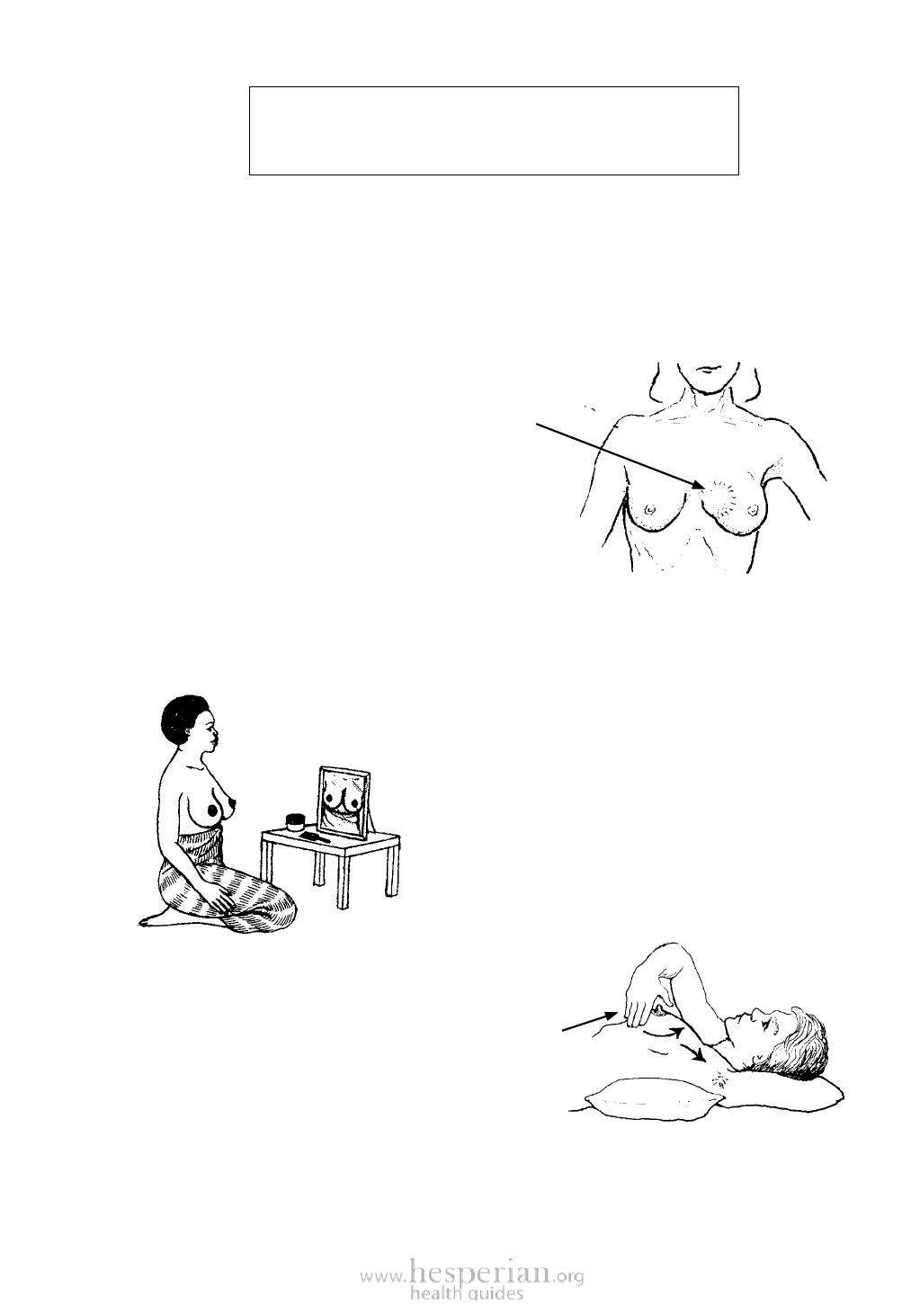
Where There Is No Doctor 2011 279
A painful, hot lump in the breast of a nursing mother
is probably a breast abscess (infection).
A painless breast lump may be cancer, or a cyst.
Breast Cancer
Most women have some small lumps in their breasts. These lumps can change in
size and shape, and become tender during her monthly cycle. Sometimes, a breast
lump that does not go away can be a sign of breast cancer. Successful treatment
depends on spotting the first sign of possible cancer and getting medical care soon.
Surgery is usually necessary.
Signs of breast cancer:
• The woman may notice a slow-growing lump
during self‑examination of the breasts
(see below).
• Or the breast may have an abnormal dent
or dimple—or many tiny pits like the skin
of an orange.
• Often there are swollen lymph nodes
in the armpit, which may or may not
be painful.
• There may be redness or a sore on the breast that does not heal.
• She may have abnormal discharge from a nipple.
• At first it usually does not hurt or get hot. Later it may hurt.
SELF-EXAMINATION OF THE BREASTS
Every woman should learn how to examine
her own breasts for possible signs of cancer.
She should do it once a month, preferably on
the 10th day after her menstrual period started.
♦ Use a mirror to look at your breasts carefully
for any new difference between the two in
size or shape. Try to notice any of the above
signs.
♦ While lying with a pillow or folded blanket
under your back, feel your breasts with the
flat of your fingers. Press your breast and
roll it beneath your finger tips. Start near the
nipple and go around the breast and up into
the armpit.
♦ Squeeze your nipples. If blood or a discharge
comes out, get medical help.
If you find a lump that is smooth or rubbery, and moves under the skin when you
push it, don’t worry about it. But if it is hard, has an uneven shape, is painless, or
does not move when you push it, get medical advice. Many lumps are not cancer,
but it is important to find out early.